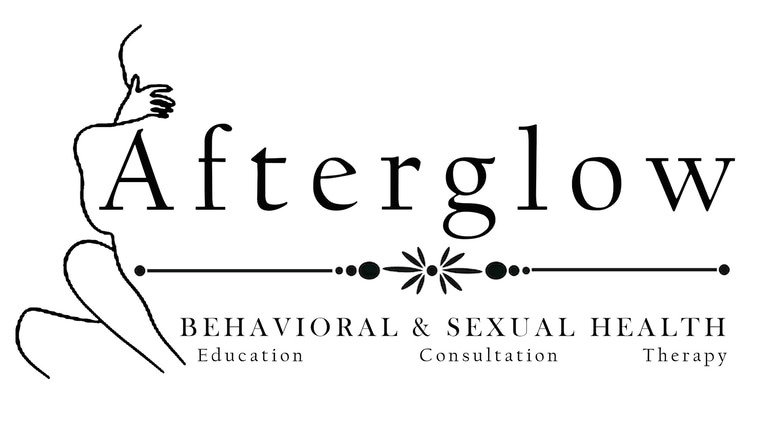Kinky Sex: Connection, Curiosity, and Why It’s Not “Perverted”
Kinky sex isn’t perverted, gross, or shameful — it’s a normal and healthy part of human sexuality that thrives on trust, communication, and creativity. Research shows that most people have kinky fantasies, but many keep them hidden out of fear or shame, creating unnecessary disconnection in relationships. Far from being reckless, kink actually requires more care and communication than many “vanilla” encounters, with consent and aftercare at its core. When shared openly, kinks can strengthen intimacy, reduce stress, and bring playfulness and vulnerability into the bedroom, turning what’s often stigmatized into a powerful way to connect.
GENERAL SEXUAL HEALTH
Dr. Kent
10/7/20254 min read


Let’s be honest: the word kinky tends to make people squirm — sometimes in excitement, sometimes in embarrassment, sometimes because they’re sitting on a chair with questionable memories attached. For decades, kinky sex has been painted as “perverted,” “gross,” or “something only those weird people do.” Spoiler alert: you’re those people. We all are.
Research consistently shows that nearly everyone has kinks, whether they talk about them or not. Some are mild — like enjoying a little dirty talk — and some are more elaborate — like dressing up as a Viking accountant who only achieves orgasm when balancing spreadsheets. (Hey, no judgment.) The real issue isn’t whether people have kinks; it’s whether they feel safe enough to share them.
The Data on Desire
So, how common are kinks, really?
A 2015 study published in the Journal of Sexual Medicine found that nearly 65% of participants reported at least one “unconventional” sexual interest, and over 30% reported trying one in real life.
Another survey by Joyal & Carpentier revealed that BDSM-related interests — bondage, dominance, submission, masochism — were among the most commonly reported fantasies.
And here’s the kicker: people who explore their kinks safely and consensually often report higher relationship satisfaction than those who suppress them.
Translation: kinks aren’t rare, shameful oddities. They’re a normal part of the human erotic imagination.
What Kinky Sex Actually Is
Kinky sex is a broad umbrella, but at its core, it involves exploring power, sensation, and play outside the “standard script.” It might include:
Bondage and restraints (from silk scarves to ropes).
Sensory play (blindfolds, ice, feathers, floggers).
Roleplay (teacher/student, boss/employee, or dragon slayer/princess — again, no judgment).
Dominance and submission dynamics (negotiated and consensual).
Notice what’s missing from that list? Anything about shame, pathology, or “grossness.” Kinky sex isn’t about being broken. It’s about being curious.
Connectivity Is the Heart of Kink
Here’s the therapeutic truth: kinky sex requires more communication and trust than many “vanilla” encounters. If you’re going to tie someone up, you’d better be talking before, during, and after. That level of negotiation fosters a depth of connection that many couples find transformative.
Think about it:
You talk through boundaries beforehand (“Yes to blindfolds, no to gagging”).
You establish safe words or signals (like “yellow” for “slow down” or “pineapple” for “stop immediately”).
You check in afterward, often engaging in aftercare — cuddling, affirmations, reassurance.
Kink, in practice, is a master class in intimacy. You’re essentially saying, “I trust you enough to hand you the reins, and I trust myself enough to use them responsibly.” That’s not perversion; that’s partnership.
Why Kinks Get a Bad Rap
So why the lingering stigma? A mix of cultural baggage and outdated psychology. Early psychiatric manuals literally classified BDSM and fetish interests as disorders. It wasn’t until 2013, with the release of the DSM-5, that consensual kink was officially removed from the category of “mental illness.”
Yet the shame stuck. Movies and TV often portray kink as dark, secretive, or dangerous. (Looking at you, Fifty Shades, for mixing real kink with questionable consent.) But modern research paints a different picture: kinky people are generally no less psychologically healthy than anyone else. In fact, a 2013 study in the Journal of Sexual Medicine found that BDSM practitioners scored higher on measures of well-being and openness than the general population.
So, if kink is shameful, then apparently shame makes you healthier, happier, and more creative. Weird flex, but okay.
Humor in the Kinky Lane
Let’s not forget: kink can be funny. Not everything has to look like a glossy magazine spread. Restraints sometimes slip. Roleplay accents sometimes veer into comedy. And safe words? They can be hilarious. (Imagine yelling “cantaloupe!” mid-thrust. Passionate and practical.)
Humor is actually therapeutic here. Laughing together during kink reassures both partners that the connection is solid, even if the whip cracks a little too softly or someone forgets their “villainous monologue.” Play is part of the fun — and part of the healing.
Everyone Has Kinks (But Not Everyone Shares Them)
Here’s the part most people don’t realize: almost everyone has some kinky fantasies, but many keep them hidden. Why? Shame, fear of rejection, or simply not having the words.
Data supports this: Joyal’s research found that over 90% of people reported at least one kinky fantasy, but far fewer had disclosed it to a partner. That gap between desire and disclosure is where relational disconnection lives. When you suppress your erotic imagination, you also suppress vulnerability, honesty, and connection.
Therapeutically, naming and sharing kinks can transform intimacy. It’s not about pressuring your partner to say yes to everything — it’s about creating space where no one feels judged for wanting what they want. Sometimes, just talking about fantasies increases satisfaction, even if they never leave the realm of imagination.
Consent, Communication, and Care
Like rough sex, kink thrives on three C’s:
Consent: Nothing happens without it. Period.
Communication: Before, during, after — keep talking.
Care: Emotional aftercare ensures that both partners feel safe, valued, and connected.
Far from being “gross,” kinky sex is often one of the safest sexual styles, precisely because it’s built on these principles. Vanilla sex can happen without a word; kinky sex usually can’t. And that’s a good thing.
The Data-Driven Benefits of Kink
If you’re still skeptical, the science is here to reassure you:
People who practice consensual kink report higher levels of relationship trust and satisfaction (Journal of Positive Sexuality, 2018).
Kink practices like bondage or sensory play often increase physiological arousal through adrenaline and endorphins, similar to exercise.
BDSM scenes can actually lower stress. A study by Sagarin et al. (2009) found that both tops and bottoms in BDSM reported decreases in cortisol afterward — meaning kink can literally chill you out.
So, no — kinky sex isn’t unhealthy. In fact, your therapist might quietly wish you tried it. (Don’t worry, they won’t say it out loud.)
The Therapeutic Bottom Line
Kinky sex isn’t perverted, gross, or shameful. It’s passionate, playful, and — above all — connected. Everyone has kinks, whether mild or adventurous. The real work lies in acknowledging them, talking about them, and deciding (together) how to explore them safely.
If you think kink is about whips and chains only, think again. It’s about trust, creativity, vulnerability, and intimacy. In many ways, it’s sex with an extra dose of mindfulness — not about going “outside the norm,” but about going deeper into yourself and your relationship.
So, the next time you feel embarrassed about your fantasy, remember: your kink is not a punchline. It’s a doorway to connection. And with the right partner, the safe word might just be “more.” And you can let the Afterglow begin.
Connect with us
© 2025. All rights reserved.
dr.kent.sexhealth@gmail.com


